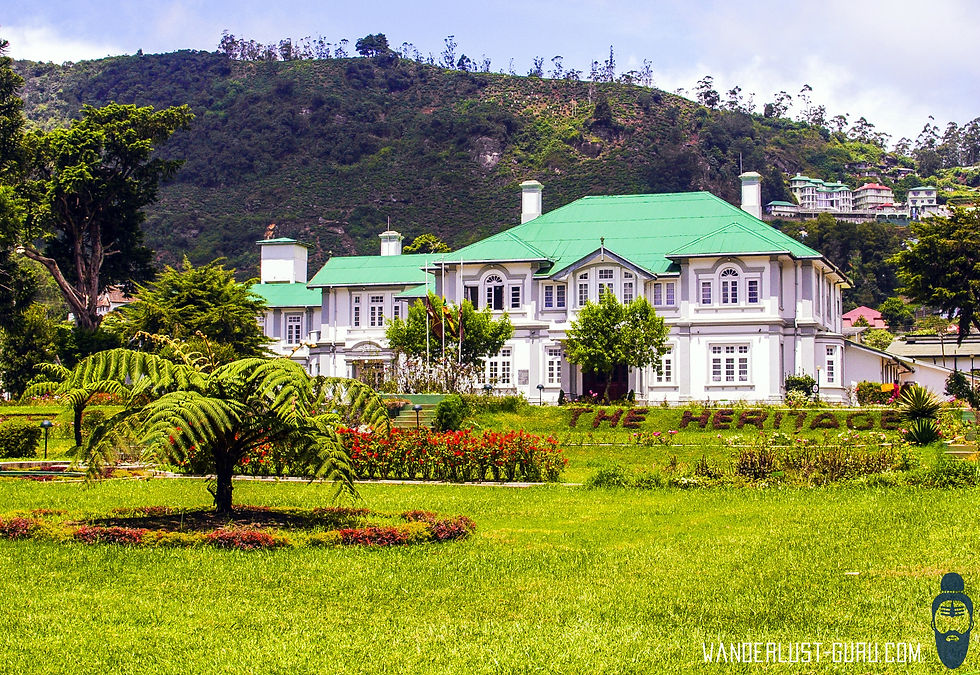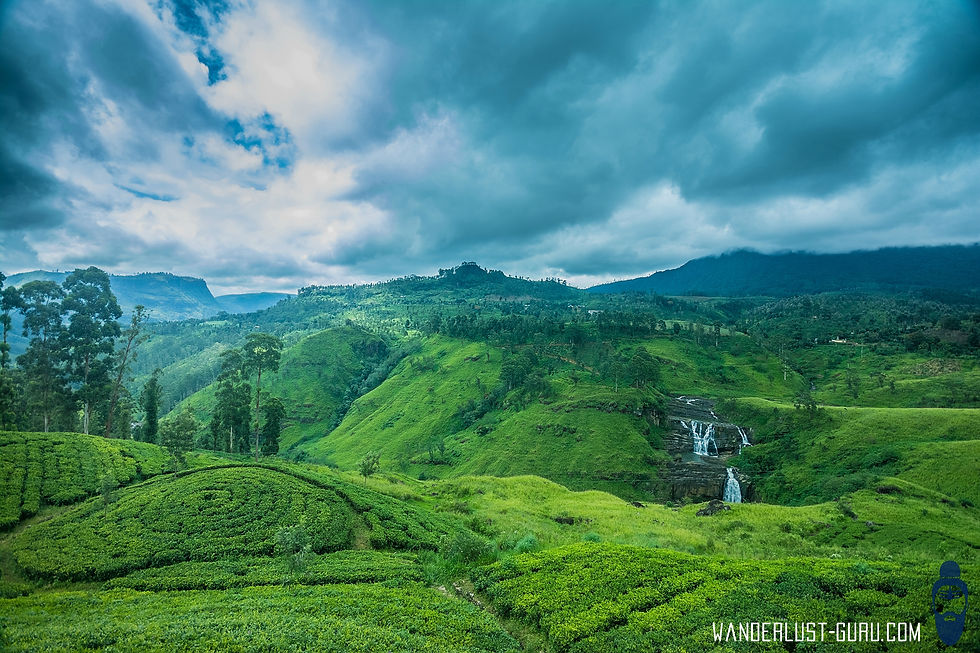A journey to the tea in Sri Lanka's highlands
- Rocco
- Mar 16, 2016
- 3 min read
The English have already known why they claimed Nuwara Eliya as a health resort. In the highest-situated city in Sri Lanka it can be really cold and it rains often - a climate that was the British well known from their homeland. The tourists who come here today from the warm coastal region are very happy about the fluffy-thick blanket they find in the hotel bed - which can be good use.
1826, some officers discovered the location on 1890 meters above sea level, as they were lost while hunting elephants there. Already in the second half of the 19th century, a "little England" had grown with several noble houses. Even a racecourse and a golf club was there.

Today evidence of the British heyday Nuwara Eliyas, a post office and a number of hotels in a colonial style. In the afternoon the tourists meet here for “high-tea”. Small appetizers like cucumber sandwiches, mini-wraps and sweet tarts are served. The British had also brought the tea to the highlands of Sri Lanka. This is still one of the main exports of the South Asian country - after textiles and clothing.
In 1867, the Scotsman James Taylor created the first tea plantation in the former Ceylon. He is the pioneer of the tea industry in Sri Lanka. World's famous however was Thomas Lipton, who bought from 1890 tea plantations on the island. The British had recognized how favorable the climate was in the highlands for the cultivation of tea plants, since a fungus disease had destroyed the prevailing coffee cultivation.
The most beautiful is the journey into the realm of Ceylon teas with the railroad. From the former royal city of Kandy are about 90 kilometers to Nanu-Oya, a small station where you must get off to get to Nureliya. Although the railway needs more than four hours for this route, but this decelerated mode of travel is worth it.

The doors of the carriages remain wide open the whole ride over. This is useful if you are sitting in the first class and you would like to take a picture of the landscape. Because the car is air-conditioned, the windows can be not open. Watch out that you do not fall out of the open door, it can be very jerky sometimes. Whoever puts less emphasis on air conditioning, sits better in second class. Here, although it is stuffy, but the sliding windows provide the best view at the photo opportunities that pass outside. More adventures promises the ride in the third class. Locals, young backpackers and Chinese tour groups sitting here. There are plenty of options for a nice chat.

After about two and a half hours, the first tea factory is in sight, behind the place Watawala. The multi-storey buildings stand in lush green tea fields. In between, you can see the corrugated metal roofs of small huts where the tea pickers live. Almost only women do the heavy work - up to 18 kg tea leaves collect in large bags on their backs. Carefully harvested only two leaves and a bud for the best quality tea. About 1 000 rupees a day with this work earned a tea plucker, approx 6 Euro/Dollar. Already in colonial times, the hard work on the plantations was not popular. Because they refused to work, the British brought the Tamils from India at that time on the island. Their descendants work as tea pickers still today. However, they are not to be mixed up with the native Sri Lankan Tamils who came to the island 2000 years ago. They now live mainly in the northern and eastern provinces of the country - where decades of civil war raged.

Kalaivani Sivakasi also is derived from the Indian tea pickers Tamils who came to Nureliya in the 19th century. She performs as a guide daily tourist groups through the factory of tea plantation "Pedro". During the tour, travelers experience how the tea comes from the bush to the cup. Only 24 hours of Orange Pekoe needed for this route, then it is ready for export. Kalaivani shows where the leaves are dried, rolled and fermented.
Also here working mostly woman. "The men take work such as cutting back the tea plants", explains the guide. The factory visit ends - as anywhere in the world – in the company shop. At the end of the journey into the realm of Ceylon teas, tourists drink one cup of Orange Pekoe on the terrace of the tea factory. Rain clouds gathering over the rolling green hills. Soon there will be drizzle again - here it feels really almost a bit like being in England.
Accommodation: booking.com or agoda.com


コメント